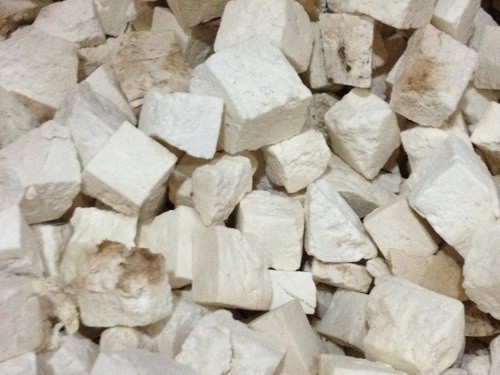Poria Mushroom* Extract
Wolfiporia extenda
Nammex Poria is a sclerotium, processed by hot water extraction into a fine powder suitable for encapsulation or beverages.
| Beta (1-3),(1-6)-glucans | Greater than 30% |
Nammex Poria is 100% Pure Sclerotium
No added fillers, starch or grains
Poria History
Poria has been used in Traditional Chinese Medicine for thousands of years. Today it is extensively cultivated on wood logs buried in the ground. *Poria is commonly referred to as mushroom but is actually a sclerotium, a hardened mass of mycelium that forms around the roots of trees. It is a rich source of carbohydrates with an atypically low amount of protein. It is used in many Traditional Chinese Formulas for its diuretic properties. Research has also demonstrated immunological potentiation.
Poria Uses
Proudly Made in China
In 1996, CEO and Founder of Nammex, Jeff Chilton organized organic mushroom production in China. That initiative paid off and today all Nammex mushrooms are grown or wildcrafted deep in the mountains of China by our Certified Organic production partners.
Not All Medicinal Mushrooms Products are Created Equal
US lab-grown Poria is not sclerotia but mycelium grown on grain. Analysis has shown that US Poria mycelium on grain has low levels of beta-glucan and very high levels of starch. Nammex only uses 100% sclerotia which are rigorously tested and guaranteed for active compounds. Learn more about the mycelia myth and the 10 Questions to Ask about Your Mushroom Supplement.
Active Compounds
Beta (1>3),(1>6)-glucans; Triterpenoids
Product Attributes
Kosher; Vegan; Gluten-free; Non-GMO
Poria Mushroom Research
- Rios JL., Chemical constituents and pharmacological properties of Poria cocos. Planta Med. 2011 May; 77(7):681-91.
- Cheng S. et al., Triterpenes from Poria cocos suppress growth and invasiveness of pancreatic cells through the downregulation of MMP-7. INTERNATIONAL JOURNAL OF ONCOLOGY 42: 1869-1874, 2013
- Feng YL et al., Diuretic activity of some fractions of the epidermis of Poria cocos. J Ethnopharmacol. 2013 Dec 12;150(3):1114-8

